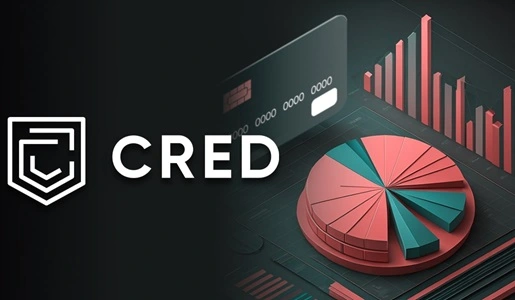Cred, a Bangalore-based fintech startup, has gained significant popularity in India by providing a platform for credit card bill payments with rewards. Founded by Kunal Shah in 2018, Cred’s unique business model has attracted millions of users. But the big question is – how does Cred make money and generate profits? Let’s break down Cred’s business model and its revenue streams.

What is Cred?
Cred is a members-only platform that rewards users for paying their credit card bills on time. By making credit card bill payments through Cred, users earn Cred coins, which can be redeemed for various offers, discounts, and rewards from top brands. Over time, Cred has expanded its services beyond credit card payments, adding features like Cred RentPay, Cred Stash, and Cred Mint, offering more value to its users.
Cred’s target audience is India’s top-tier credit cardholders. By focusing on people with credit scores above 750, Cred has positioned itself as an exclusive service for premium users.
Cred’s Business Model
Cred’s business model is primarily based on building a loyal, high-value user base and leveraging that for multiple monetization streams. Let’s look at the core components of its model:
1. Rewards and Loyalty Program
Cred’s foundation lies in its reward system. The platform incentivizes users to pay their credit card bills by offering Cred coins, which can be used to claim deals and discounts on various products and services. This creates a positive feedback loop, encouraging users to continue paying their bills through Cred.
2. High-End User Base
Cred’s core user base comprises creditworthy individuals with good financial standing. These users typically belong to India’s affluent class, making them an attractive target for businesses and brands looking to sell premium products or services. With access to a premium audience, Cred can offer tailored advertising and partnership opportunities.
3. Data Collection
Cred collects valuable data on its users, such as their spending patterns, credit card usage, and preferences. This data is extremely useful for Cred as it helps the company create targeted marketing campaigns and offer personalized services. Moreover, businesses that want to reach these high-end consumers can leverage Cred’s platform to tap into this data for better customer targeting.
How Does Cred Earn Profit?
Though Cred offers many of its services for free, it has multiple revenue streams that help the company generate profits:
1. Interchange Fees from Credit Card Payments
One of the key ways Cred makes money is through interchange fees. When users make payments through Cred, the platform earns a small percentage of the transaction fee. These fees are paid by the credit card companies and banks for processing transactions. Though the individual fee for each transaction might be small, Cred processes millions of transactions, leading to substantial revenue.
2. Partnerships and Sponsorships
Cred has built partnerships with a wide range of brands and companies, offering exclusive deals and discounts to its users. These partnerships benefit both parties. Cred earns revenue from these brands, either through a fee or a commission on each deal claimed by the users, while brands get access to a premium audience that is likely to engage with their products and services.
3. Financial Products
Cred has also introduced several financial services that generate revenue. For instance, Cred Stash is a service that allows users to access instant credit lines at lower interest rates. This service provides Cred with interest income from users who borrow through the platform.
Another service, Cred RentPay, allows users to pay their rent using their credit cards. Cred charges a small processing fee for these transactions, adding another revenue stream to its business.
Recently, Cred launched Cred Mint, a peer-to-peer lending platform where users can lend money to others and earn interest. Cred acts as an intermediary, charging a commission or transaction fee from both the lender and the borrower.
4. Advertising and Marketing
Since Cred has a premium user base, it’s an attractive platform for brands to advertise. Cred allows companies to showcase their products and services directly to its users. These advertisements are carefully curated, ensuring they align with the high-end preferences of Cred’s users. Cred earns revenue from brands that pay to advertise or run marketing campaigns on the platform.
5. Referral Programs
Cred runs referral programs where users can invite their friends to join the platform. When someone joins through a referral and becomes an active user, Cred rewards the referrer, and the new user receives benefits as well. This increases Cred’s user base and, in turn, its potential to generate revenue through other means like partnerships, transactions, and financial services.
Challenges and Profitability Concerns
While Cred has managed to attract millions of users, there are still concerns about its path to profitability. As of now, Cred is more focused on scaling its user base rather than immediate profits. The company spends heavily on rewards and incentives to encourage users to continue using the platform.
Additionally, customer acquisition costs are high since Cred is targeting an affluent segment of the population. However, as the user base grows and Cred expands its services, there’s potential for the company to turn its massive user engagement into higher profits.
Conclusion
Cred’s business model revolves around building a loyal, creditworthy user base and offering them value through rewards and financial services. By leveraging partnerships, transaction fees, and data, Cred has multiple revenue streams. While it may not be highly profitable at present, its strong user base and expanding services position it well for long-term success in India’s fintech space.
With continuous innovation, partnerships, and an expanding financial product suite, Cred could potentially grow into one of India’s leading fintech players, driving revenue from multiple avenues.